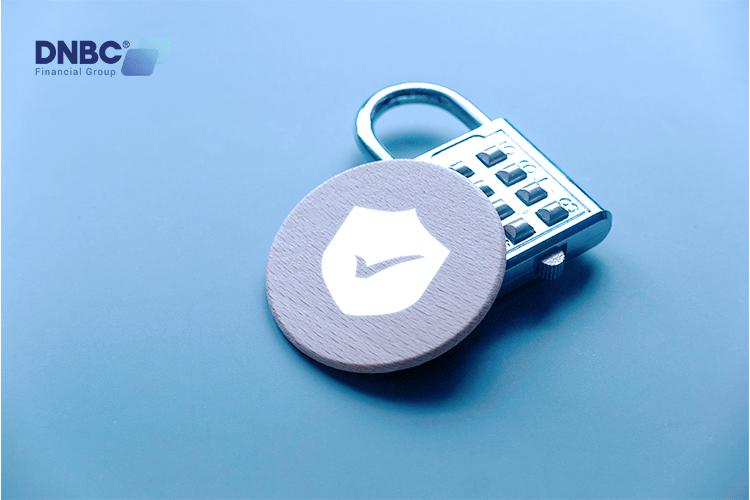In today’s digital age, the convenience of online transactions has revolutionized how we manage and move money. However, as the volume of digital payments continues to grow, so do the threats posed by cybercriminals seeking to exploit vulnerabilities in payment systems. From phishing schemes to data breaches, these security challenges are becoming more sophisticated, making it crucial for individuals and businesses to adopt secure practices when sending and receiving money.
One of the critical aspects of safeguarding financial transactions is effective capital fund management, which involves the efficient allocation of financial resources but prioritizes the security of these transactions. Without proper safeguards, even the most well-managed funds can be at risk of cyber theft or fraud.
In this blog post, we’ll explore the major threats to payment security in the digital age and offer actionable tips on securely sending money online. We’ll also discuss how DNBC can help individuals and businesses transfer money internationally with competitive pricing and robust security features. Let’s understand how to protect your transactions and ensure financial safety in today’s increasingly connected world.
Understanding Payment Security Threats in the Digital Age
As digital payments continue to grow, so do their associated risks. The digital transformation of financial services has brought speed and convenience, but it has also opened up new opportunities for cybercriminals to exploit vulnerabilities in payment systems. Understanding these threats is the first step toward safeguarding your transactions and assets.
Rising Volume of Digital Payments and Cybercrime
Recent data shows that global online transactions have surged, with millions of people and businesses relying on digital payments for everyday purchases and international transfers. According to reports from industry analysts, global digital payments are expected to reach $10.52 trillion by 2025. However, with this growth comes a corresponding increase in cyber threats, Cybercrime will cost the world over $10 trillion annually by 2025 (Source).
Common Threats to Payment Security
- Phishing Attacks Phishing remains one of the most common and effective methods cybercriminals use to steal sensitive payment information. In these attacks, fraudsters impersonate trusted institutions, such as banks or payment platforms, to trick users into disclosing their credentials, including passwords or credit card information. Despite increased awareness, phishing scams are becoming more sophisticated, often bypassing basic security measures.
- Data Breaches Large-scale data breaches have become alarmingly frequent in recent years, affecting even the most secure payment platforms. Hackers gain unauthorized access to sensitive financial data in a breach, such as credit card numbers, customer names, and account details. In 2023 alone, several high-profile companies suffered breaches that compromised millions of user accounts, emphasizing the importance of robust security protocols (Source).
- Malware and Viruses Cybercriminals deploy malicious software (malware) and viruses to infiltrate users’ devices, intercepting or altering payment data without the user’s knowledge. Once infected, users may unknowingly expose their financial information, giving hackers direct access to their bank accounts or payment platforms. Mobile and desktop devices, when left unprotected, can become gateways for malware designed to steal payment credentials.
- Man-in-the-Middle (MitM) Attacks In a man-in-the-middle attack, hackers intercept the communication between two parties—such as between you and your bank—allowing them to manipulate or steal the data being transmitted. These attacks often occur when users conduct transactions over unsecured networks, like public Wi-Fi. Without proper encryption and security protocols, your sensitive payment information could be hijacked mid-transaction.
The Importance of Strong Capital Fund Management
Given these growing threats, capital fund management must go beyond efficient resource allocation to include robust security protocols. A well-managed financial operation involves continuously monitoring transactions for suspicious activities, employing encryption, and adhering to best practices for safeguarding funds. Without these precautions, organizations risk significant financial losses and reputational damage from a security breach.
By understanding these threats and recognizing the importance of secure payment practices, individuals and businesses alike can take steps to protect their transactions and ensure their funds remain safe in the digital age.

Safe way to send money: Tips for Secure Transactions
With the rise of online payments, ensuring that your money is sent safely and securely has never been more critical. Cybercriminals continue to find new ways to exploit vulnerabilities in payment systems, but fortunately, there are steps you can take to protect yourself. Below are some practical tips to ensure your online transactions remain secure and reliable.
Tip 1: Use Secure Payment Methods (e.g., 3D Secure Transactions)
One of the most effective ways to protect your money during online transfers is to use payment methods that offer enhanced security, such as 3D Secure technology. This is an additional layer of authentication for card payments, requiring the user to verify their identity before a transaction is completed. It helps prevent unauthorized transactions, especially in cases where a card has been stolen or compromised. Payment gateways that utilize 3D Secure ask users to authenticate via a password, biometric data, or a one-time code sent to their mobile devices.
Incorporating secure payment methods like 3D Secure into your transactions can provide peace of mind and ensure that your funds reach the intended recipient safely.
Tip 2: Verify the Recipient’s Identity
Before sending money online, especially to unfamiliar accounts, verifying the recipient’s identity is crucial. Fraudsters often create fake identities or imitate trusted contacts to trick users into transferring money. Always double-check the recipient’s information before transferring, such as their name, bank details, or payment platform account.
Additionally, platforms like DNBC offer identity verification systems to ensure that both the sender and recipient are legitimate, reducing the risk of fraud.
Tip 3: Avoid Using Public Wi-Fi for Financial Transactions
Using public Wi-Fi networks for online transactions poses a significant risk, as these networks are often unencrypted and easily accessible to hackers. A common technique used by cybercriminals is to intercept data over public Wi-Fi, allowing them to steal your payment details or personal information in what is known as a man-in-the-middle attack.
Always use a private and secure internet connection to minimize this risk when sending money online. If you must use public Wi-Fi, consider using a Virtual Private Network (VPN) to encrypt your data and shield your activity from potential attackers.
Tip 4: Enable Two-Factor Authentication (2FA)
Adding an extra layer of security through two-factor authentication (2FA) is one of the most effective ways to secure your online accounts. With 2FA, even if your password is compromised, an additional verification step is required to access your account—this could be a code sent via SMS, an email, or an authentication app.
Most financial institutions and payment platforms, including DNBC, offer 2FA as an option to protect accounts. Ensure this feature is enabled for all your payment and money transfer services to mitigate the risk of unauthorized access.
Tip 5: Monitor Your Accounts Regularly
Even with multiple layers of security, no system is entirely foolproof. Therefore, it’s essential to regularly monitor your financial accounts for any unusual or unauthorized transactions. By monitoring your account activity, you can quickly detect and report suspicious behavior before it escalates into a more significant issue.
Most banks and online platforms provide automatic transaction alerts, which can help you stay informed in real-time. Additionally, reviewing your transaction history monthly is wise to ensure everything is in order.

How DNBC Ensures Safest Way to Wire Money Transfers
When transferring money internationally, security and cost are often the two most significant concerns for individuals and businesses. With a rising number of options available, choosing a service provider that offers competitive rates and prioritizes security is essential. DNBC has established itself as a trusted global financial services platform, providing users a seamless and secure way to transfer money across borders. Here’s how DNBC ensures your international transfers are safe and secure while offering competitive pricing.
1. Advanced Encryption and Fraud Detection
At the heart of DNBC’s security measures is its advanced encryption technology . This ensures that all sensitive financial data is encrypted during transmission and when stored, preventing unauthorized access. Using industry-standard encryption protocols, DNBC ensures that hackers and cybercriminals cannot intercept or manipulate transaction data.
Additionally, DNBC integrates sophisticated fraud detection systems that constantly monitor transactions for any suspicious activity. This proactive approach helps detect fraudulent transactions before processing, protecting users from potential financial losses. Whether you’re sending small payments or large sums, DNBC’s monitoring tools keep your transfers secure from start to finish.
2. Compliance with International Security Standards
DNBC complies with international security regulations, such as the Payment Card Industry Data Security Standard (PCI DSS) and the General Data Protection Regulation (GDPR). These regulations ensure that DNBC adheres to strict security protocols for handling and storing customer data. Compliance with such global standards provides peace of mind to customers, knowing that their personal and financial information is well-protected.
Additionally, DNBC’s implementation of Know Your Customer (KYC) procedures ensures that all users undergo verification before sending or receiving funds. This reduces the risk of fraud and ensures that only legitimate transactions are processed through the platform.
3. Utilizing 3D Secure Transactions for Added Protection
As discussed earlier, 3D Secure transactions provide an extra layer of security for card payments by requiring users to authenticate their identity during the transaction process. DNBC utilizes this technology, ensuring that all credit or debit card transactions are subject to this verification process. This drastically reduces the risk of unauthorized transactions, making it one of the safest ways to wire money internationally.
Adding a layer of authentication, DNBC ensures that your transfers are protected, even if your card details are compromised. The 3D Secure protocol mainly benefits users sending large sums of money across borders, with higher stakes.
4. Competitive Pricing and Low Transaction Fees
While security is paramount, DNBC offers highly competitive international money transfer pricing. High fees are often a concern when sending money internationally, but DNBC ensures that users can send money at a fraction of the cost compared to traditional money-transfer services. Through its streamlined operations and global network, DNBC minimizes intermediary fees, allowing users to get the best transfer rates.
DNBC’s transparent pricing model means no hidden fees exist, and users can calculate costs upfront, providing clarity and control over their financial transactions.
5. Seamless User Experience with a Focus on Security
DNBC combines ease of use with security. The platform’s user-friendly interface allows individuals and businesses to initiate transactions quickly, with clear prompts and guidance. Despite its simplicity, security features remain robust, with multiple authentication steps, encryption, and real-time transaction monitoring.
For customers who need to send money internationally regularly, DNBC provides tools to manage recurring transfers while ensuring that security remains uncompromised. This combination of convenience and protection makes DNBC a top choice for those looking to transfer money safely across borders.

Conclusion
In the digital age, as the convenience of online transactions increases, so do the risks associated with cyber threats. From phishing attacks to data breaches and malware, it’s clear that protecting your financial transactions requires more than just basic security measures. Understanding these threats is the first step toward securing your online payments.
By following best practices such as using 3D Secure transactions, enabling two-factor authentication, avoiding public Wi-Fi, and regularly monitoring your accounts, you can significantly reduce your risk of falling victim to cybercrime. Whether you are sending money domestically or internationally, adopting these strategies ensures that you use the safest way to send money online.
For those seeking a reliable and secure platform for international money transfers, DNBC provides an excellent solution. With advanced encryption, fraud detection, competitive pricing, and compliance with global security standards, DNBC ensures that your transactions are secure and cost-effective. Whether you’re an individual or a business managing capital fund management , DNBC offers the tools and services to handle your money confidently.
In a world where online payments are increasingly common, prioritizing security is not just a choice—it’s a necessity. Take the time to safeguard your transactions and choose trusted platforms like DNBC to protect your financial future.
DNBC Financial Group is your trusted provider in international money transfer
- Get 100% free 1-on-1 support
- 100% free account opening
- Seamless onboarding process
Or please contact DNBC
![]() Email: [email protected]
Email: [email protected]
![]() Phone Number:
Phone Number:
- +65 6572 8885 (Office)
- +1 604 227 7007 (Hotline Canada)
- +65 8442 3474 (WhatsApp)



 DNBC Team
DNBC Team






